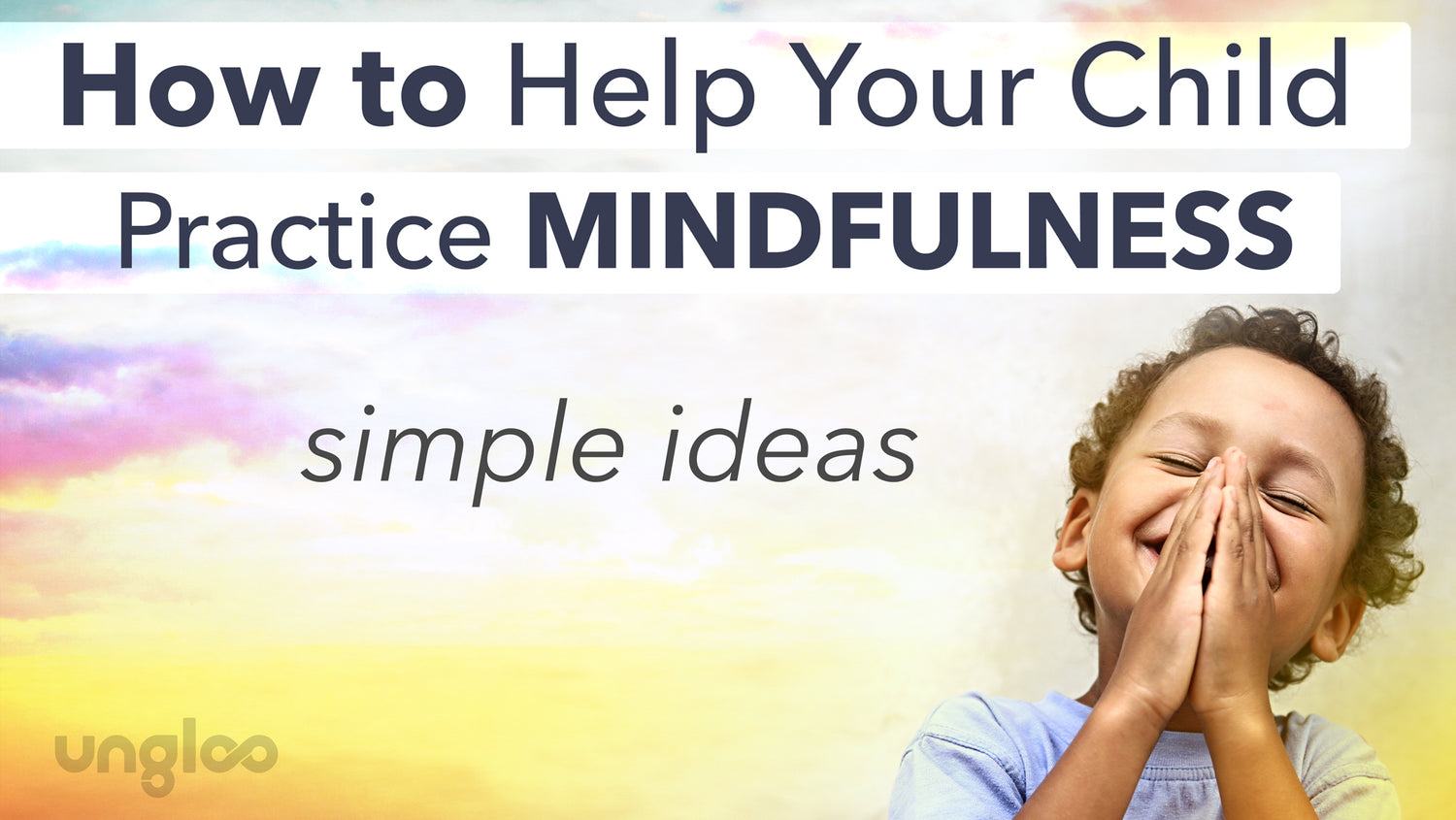Do you have a child with a short attention span? Or maybe your child is constantly bouncing off the walls unless they’re asleep or in front of a screen? We get it.
It hard enough just being a parent at any time in history but now, with how modern society is reshaping our precious youngsters, the challenges of parenting have become even harder.
We want the best for our children. We want them to be successful in their endeavors both now and in the future. One of the things we can do to help is to teach them to practice mindfulness.
Mindfulness meditation has been clinically shown to have many benefits for children, including improved focus and attentiveness, reduced stress and anxiety, and better decision-making skills.
Today, we'll cover activities for mindfulness and different mindfulness techniques we can use to help our children.
What Is Mindfulness Meditation?
Mindfulness is the practice of being aware of our thoughts and feelings, and it has many benefits for both children and adults. However, the term "mindfulness" is somewhat counterintuitive to its actual meaning since the practice is more about emptying your mind than thinking more.
Benefits of mindfulness include honing our attention on the present moment, emptying negative thoughts, and becoming more aware of our surroundings. It helps us get out of our heads and ground into the reality surrounding us.
It's a simple concept on paper, but it can be difficult to achieve in our fast-paced, modern world, especially for kids! So even as an adult, try emptying your mind for just two minutes, and notice how much junk starts to permeate the mind. But in some cases, it might be even hard for an adult because of lifelong busyness and conditioning to always be on the go. So then how can we prepare our little ones to find greater balance in this ever faster paced world we find ourselves in?
Can Kids Learn How to Practice Meditation for Mindfulness?
Even if our kids are quite young or act like wild monkeys, they can still learn how to be meditative and mindful. It's entirely possible! They experience a lot of stress in their lives, just like us adults.
School can be tough, kids can be mean, and they're constantly bombarded with new information daily. Mindfulness can help them learn how to properly cope with life and stay in the present moment.
Now that we've briefly covered what mindfulness meditation is, let's go over some simple ways we can use to start our children on the path to inner peace and enlightenment.
Help Your Child Become Aware of Themselves
A great way to help our children practice mindfulness is to encourage them to become physically, mentally, and spiritually aware of themselves. A simple method to achieve this is by using body scans. Have them lie down on their back with their eyes closed.
Once they're comfortable, have them concentrate on their breath and notice how it feels as they inhale and exhale. After a few minutes, lead them to examine their body and notice any sensations they're feeling. Are their muscles tense or relaxed? Do they have any aches or pains?
After we've done that, have the child analyze their thoughts and emotions to help them integrate what they learned from the experience. Ask them what they’re thinking about? How do they feel? Encourage them to simply observe their thoughts and emotions without judgment. This is a practice they can do anywhere, at any time.
Use Guided Meditations
If your child struggles to focus, you can try a guided meditation. Guided meditations can help our children get into the present moment. Many great teachers are available online or through mindfulness apps for kids like Mindful Powers, as well as Gaia, Headspace, and Calm.
For free videos, head over to YouTube and search for "mindfulness meditation for kids." You'll find a ton of great videos that your child will love. The kid-friendly visuals can help our children get into the practice of meditation and learn how to become contemplation masters.
Take a Walk Into Nature With Your Child
One of the best ways to practice mindfulness is by getting out into nature. And what better way to do that than by taking a walk with our child? (And, of course, it’s best to leave the screens behind.) Walking helps relax and clear our minds. And it gets even better as we go deeper into nature---Earth comes alive and heals our souls.
Make it a point to walk with your child at least once weekly. And instead of listening to music or texting on the phone, take the time to immerse yourself in your environment. Notice the colors of the leaves and flowers. Listen to the birds singing. Smell the fresh air. And feel the sun on your skin.
Point out these small details to your child along the way. It can help our children feel more grounded and connected to our world. It's a great way to practice mindfulness and teach our children about being present.
Eat a Mindful Meal or Snack With Your Child
Another fun way to practice mindfulness is by eating a meal or snack with your child. This is a great opportunity to teach our children about being present and paying attention to bodily sensations.
When you're eating, notice the food's taste, texture, and smell. And pay attention to how your body feels as you're eating. Can you chew one bite of food thirty times before you swallow? Are you getting full? Do you feel satisfied? Ask your children these questions while you both enjoy your favorite meal or treat.
Use this as a great opportunity to help your child practice being present in their bodies. Eating mindfully can help our children appreciate food and also many other activities. It's an easy way to practice the art of mindfulness at a remarkably young age.
Have Your Child Focus on Their Breath and Count to Ten
If your child is feeling worried or upset, have them focus on their breath and count to ten. This is a terrific way to help our children calm down and learn meditative mindfulness.
When they're feeling overwhelmed, have them take a few deep breaths and notice how their body feels. Then have them count to ten. This will help them become conscious of the present moment and not get overtaken by their thoughts. It's an easy introduction to meditative practice for children.
Try Some Simple Yoga Poses That Can Help Improve Mindfulness
Yoga is a highly effective way to practice mindfulness with children. And there are many simple yoga poses that can help our children improve their ability to feel a sense of groundedness.
One of the best things about yoga is that it can be done anywhere. And it's an effective method to get our children moving their bodies. Try some simple yoga poses like mountain pose, tree pose, and downward dog. These are all great poses for kids to practice mindfulness.
Yoga helps our children to get in touch with their bodies and learn how to become mindful of physical sensations. It's an excellent way to practice mindfulness at any age.
Encourage Your Child to Find a Quiet Place to De-stress
If your child is feeling the heaviness of life, encourage them to find a quiet place to de-stress. This could be their bedroom, the backyard, or even at a good friend's house. Teaching our children that they can always have a safe space to go gives them hope and a sense of peace.
When they're in their quiet place, encourage them to practice some of the mindfulness techniques that we've talked about. They can bring coloring books, journals, snacks, or their favorite toys to their quiet place. And they can stay there for as long as they need to.
Help Them Develop a Simple Daily Meditation Routine
Teaching our children about routines can help them develop a sense of order and calm in their lives. And one of the most useful routines that they can develop is a daily meditation practice.
A daily meditative practice can help our children perform meditation consistently, which leads to continuous growth. It's an excellent way to practice mindfulness and improve their overall well-being.
There are many ways to meditate, so find one that works best for your child. They can use any of the above methods. Just be sure to practice with them, so they can see how it's done.
Buy Your Child a Meditation Chair
If you want to help your child practice mindfulness more comfortably, buy them a meditation chair or some support blocks. This will allow them to sit comfortably while they practice. And they can take it to their favorite spot, whether outside or inside. By using a meditation chair you are also providing another queue to help your child know it’s time to settle down and breathe. When looking for a meditation chair or cushion, we want to make sure it's comfortable and can fit in any space. We want our children to relax while they practice, so they can get the most out of the experience.
Practice Mindfulness With the Ungloo Box
We hope these tips have helped you understand how to help your child practice mindfulness. It's important to remember that each child is different and will respond to different techniques, so be patient. Try different things, and see what works best for your child.
With a little effort, you can help your child develop a strong mindfulness practice that will serve them for a lifetime.
A meditation chair could be just what they need to feel excited about practicing mindfulness. Check out our meditation chairs at Ungloo. Our products are for all ages and can truly enhance the meditative experience.



